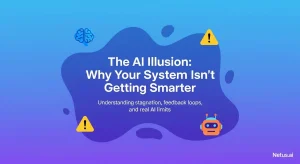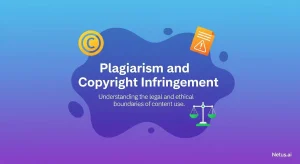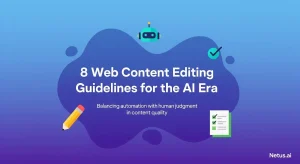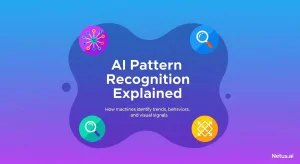Self-Plagiarism: How to Avoid it in Academic and Professional Writing
Ashley Merit
Content writer and editor for Netus.AI
Table of Contents
Self-Plagiarism. Plagiarism refers to the act of using another person’s work or ideas and presenting them as one’s own. This can encompass not only written works, but also other forms of art such as music, photography, choreographies, and even ideas. Plagiarism is a detrimental practice as it negatively impacts the original artist’s credibility and the integrity of the work.
In order to maintain credibility and avoid legal consequences, writers should strive to produce original content that conveys their own thoughts and ideas. Utilizing a plagiarism checker, whether free or paid, can be an effective method for ensuring the originality of one’s work before sharing it with the audience.
Key Takeaways
- Plagiarism involves presenting someone else’s work or ideas as your own, affecting various forms of art.
- It is crucial for writers to maintain their credibility and adhere to ethical standards by avoiding plagiarism.
- Utilizing a plagiarism checker can help ensure the originality and integrity of one’s work before sharing with readers.
Self-Plagiarism Definition
Self-plagiarism is a type of plagiarism where an author reuses their own previously written work or portions of it, presenting it as new and original content. This practice goes against the principles of ethical writing and can lead to various issues, even though the person reusing the content is the original creator.
Given that authors hold authority over their work, they might consider altering or adapting it for different purposes. However, it is essential to understand that this “recycling” of content without sufficient changes or attribution can fall under self-plagiarism. Examples of self-plagiarism include repurposing previously published books, text, or projects submitted for academic purposes.
Avoiding self-plagiarism is crucial for maintaining the integrity and authenticity of one’s work. To ensure that this ethical standard is upheld, authors can utilize online plagiarism checker tools to detect self-plagiarism before submitting or publishing their work.
In summary, self-plagiarism is the reuse of one’s own content, presenting it as new and contributing to ethical concerns in writing. To maintain academic integrity and avoid self-plagiarism, authors should employ plagiarism detection tools and properly attribute or cite any previously used content.
Consequences of Self-Plagiarism: Why Is Plagiarism Important?
Writers and researchers occasionally work on similar topics across different projects, which might lead them to reuse their previous work without proper quotation or citation. This practice is known as self-plagiarism, and it can cause significant problems, both legally and ethically.
It is crucial to understand that even though one might be the intellectual owner of their work, the published manuscript might be the property of the publisher. Therefore, republishing without the publisher’s permission can result in copyright infringement, putting the writer at risk of legal consequences.
Here are some of the primary consequences of self-plagiarism:
- Damage to academic integrity: Educational institutions take plagiarism very seriously, as it harms their reputation and compromises the value of their degrees. Engaging in self-plagiarism can lead to accusations of academic misconduct.
- Penalties for students: If students fail to cite their previous work submitted for other projects and reuse it without permission, they might face failing grades or expulsion for academic dishonesty.
- Harm to the publisher: Reusing previously published work without appropriate citations can damage a publisher’s credibility, making them hesitant to work with the author in the future.
- Ethical concerns: Duplication of publications and oversight of proper citations deceive readers and the academic community, leading to ethical dilemmas in the research process.
To avoid these consequences, writers should take the following precautions:
- Always use quotation marks for reused content and provide proper citations.
- Seek permission from professors and publishers before repurposing previously submitted work.
- Stay informed about copyright laws and academic integrity guidelines.
- Strive for transparency and open communication when reusing one’s own content.
By understanding the importance of avoiding self-plagiarism, writers can maintain a high level of integrity, uphold ethical standards, and comply with the law, thereby preserving the credibility of both their work and the academic community.
How to Avoid Self-Plagiarism?
To prevent self-plagiarism, there are several steps you can take:
- Cite previous work: When reusing parts of previously written material, include proper citations and quotation marks, just as you would when crediting someone else’s work.
- Paraphrasing: Instead of copying phrases or sentences verbatim, restate the ideas using different words to provide original context.
- Recycling with permissions: When repurposing substantial portions of a paper, ask for permission from the publishers or your instructors before submitting the new work.
- Adding novelty: Ensure that new work contributes fresh insights and results, differentiating it from previous publications.
- Using plagiarism and grammar checkers: Run your writing through a self-plagiarism checker and a grammar tool to detect duplicate content and grammatical errors, which can help you make necessary adjustments.
By following these guidelines and best practices, you can maintain academic integrity and originality in your assignments, essays, dissertations, theses, and other writing endeavors.
How Does A Plagiarism Checker Work?
Plagiarism checkers are essential tools for writers to detect and prevent self-plagiarism in their work. These software applications support multiple formats, making it convenient for students and professionals to upload their texts and scan for duplicated content.
These tools work by comparing the uploaded text to other published and existing texts to identify similarities. For instance, if the writer has paraphrased a particular section, the plagiarism checker can detect it. To avoid plagiarism, proper citations should be added for the paraphrased sections from previous works.
Below are the key features and steps involved in using a plagiarism checker:
- Upload text: Writers can easily submit their content in various formats.
- Comparison: The software scans the uploaded document and compares it to a vast database of sources, including published articles, academic papers, and online content.
- Plagiarism percentage: The tool calculates the percentage of plagiarized content and highlights the copied sections.
- Citations: Writers can rectify plagiarized content by adding quotation marks and proper citations.
Apart from this, writers can also manually compare their works side-by-side to find similarities. The plagiarism checker will identify similar phrases or sections, allowing writers to take necessary actions.
It is crucial to choose a reliable plagiarism checker, like Copyleaks, that utilizes advanced technologies such as Artificial Intelligence and Machine Learning. These advanced features provide users with accurate results in a short period, ensuring that the content is plagiarism-free and adheres to academic integrity.
Frequently Asked Questions
Consequences of Self-Plagiarism in Academic Writing
Self-plagiarism can result in damage to an author’s reputation, possible rejection of their work, and even academic penalties. It is essential to understand and avoid this practice to maintain academic integrity.
Guidelines for Citing Own Work to Prevent Self-Plagiarism
To avoid self-plagiarism, authors should:
- Properly reference and attribute all reused content.
- Obtain permission, if required, from the original publisher.
- Clearly indicate the relevance of the reused content to the new work.
Self-Plagiarism vs Conventional Plagiarism
While conventional plagiarism involves using someone else’s work without proper attribution, self-plagiarism occurs when an author reuses their previously published or submitted content without appropriate citation or permission.
Contexts Where Recycling Content is Considered Self-Plagiarism
Some examples of self-plagiarism include:
- Using sections of a previously published paper in a new article without attribution.
- Submitting the same paper to multiple courses or journals.
- Using data or findings from a previous study without proper acknowledgment.
Best Practices for Researchers to Prevent Self-Plagiarism
Researchers can follow these practices to prevent self-plagiarism:
- Maintain accurate records of prior publications.
- Reflect on the originality of the new work.
- Carefully plan the structure and content of the article.
- Ensure all sources, including own work, are properly cited.
Addressing Allegations of Self-Plagiarism
If faced with allegations of self-plagiarism, authors should:
- Review the content in question to determine if any error was made.
- Provide appropriate citations or permission to reuse the content, if applicable.
- Engage in transparent communication with relevant parties (e.g., editors or institutions) to address the situation.

The shortcomings of content generated by AI | NetusAI
Discover why fast, high-volume AI content often fails to deliver real results. Learn about the crucial missing feedback loop and how implementing performance tracking can transform your AI content strategy.

The illusion of AI: Your system's intelligence gap | NetusAI
Stop wasting marketing spend! Most AI tools don’t learn from results, causing content stagnation and low engagement. Discover why your generative AI isn’t getting smarter and what system actually learns and optimizes content.

Plagiarism and copyright infringement | NetusAI
Learn the distinct differences between plagiarism and copyright infringement. Understand the ethical and legal implications and get practical strategies for avoiding both academic and creative work with NetusAI.

Tips and strategies for mobile content marketing | NetusAI
Optimized for mobile-first indexing, learn 5 essential strategies to capture attention, enhance engagement and drive leads and sales with your mobile content marketing.

Web content editing guidelines for the AI era | NetusAI
Review web content editing guidelines for the AI era. Learn how to edit AI-generated content, ensure authenticity and optimize for SEO and readability.

Explaining AI pattern recognition | NetusAI
AI pattern recognition enables machines to identify trends for diverse applications, from detecting plagiarism to fraud. Discover its processes, models and real-world benefits.
